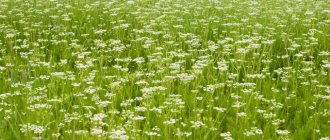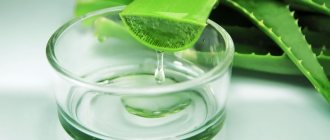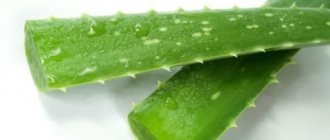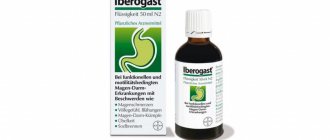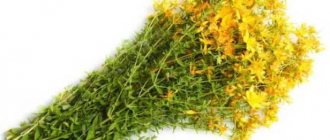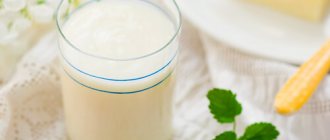The use of aloe juice and honey in the treatment of various diseases has become an example of classics among folk methods. Among the variety of medicines from the pharmacy, people still have faith in the help of natural remedies.
Aloe and honey for the treatment of gastric diseases are recommended by doctors of official medicine, often during the recovery period or in case of side effects of medications. The product is indispensable in the treatment of children with weakened immune systems. The secret of effectiveness depends on the correct choice of ingredients and adherence to the method of preparing the mixture.
Medicinal properties of aloe (agagave)
The chemical composition of the substances contained in aloe never ceases to amaze scientists. The leaves of the plant seem to be specially created to support the vital forces of the human body. Among the components found:
- about 20 amino acids, including almost the entire set of essential ones that humans cannot produce on their own;
- minerals that are part of enzyme systems and cells (potassium, copper, sodium, zinc, silicon, chromium, iron, manganese);
- vitamins, which are an indispensable means of preventing many diseases (A, group B, C, E);
- It’s worth mentioning folic acid, which is indispensable for the absorption of B12, except for aloe, it is found only in animal products, so if you are passionate about vegetarianism, it is this substance that provides the conditions for DNA synthesis and preserves human reproductive function.
The healing properties of aloe include:
- restoration of damaged cells and tissues, ensuring the regeneration process;
- relieving inflammation;
- fight against pathological microorganisms;
- moisturizing the skin and mucous membranes;
- stimulation of immunity;
- pain relief;
- activation of digestion;
- cleansing from decay products;
- improving blood circulation and blood cell composition;
- support of normal cholesterol levels;
- phytohormonal substances eliminate the effects of stress.
Almost any of these actions are useful in treating stomach diseases. The folk remedy enhances its properties when combined with honey.
How to choose the right aloe?
The name of the plant includes many different species. We are used to calling agave “tree aloe”; it grows well in a flower pot. However, it is most endowed with the beneficial composition of “aloe vera”. Its leaves are larger and are not green, but bluish-blue in color. The mass of such a leaf in nature reaches 700 g.
Aloe vera that is more than three years old is used for medicinal purposes.
Useful properties and chemical composition
Tree aloe is actively used in the treatment of gastrointestinal diseases, as it is an effective remedy. The juice of this plant:
- relieves inflammatory processes;
- accelerates bile production;
- has a beneficial effect on the digestive glands, increasing their secretion.
Aloe is widely used in the treatment of:
- intoxications;
- gastritis;
- ulcers and restoration of gastric microflora.
The therapeutic qualities of the plant are varied:
- tissue regeneration;
- normalizing cholesterol levels;
- blood renewal;
- removal of toxins from the body.
The chemical composition of the plant contains more than 230 components that have healing properties.
Each of them performs a specific function:
- Amino acids are important components of living cells because they act as the building blocks of proteins.
- Enzymes are responsible for accelerating chemical processes in the body. These proteins help improve digestion, allowing the body to almost fully absorb nutrients.
- Ascorbic acid, anthraquinone derivatives, enzymes, a group of steroids eliminate inflammatory processes, heal wounds, and restore damaged tissue.
- B vitamins, minerals and organic acids improve secret activity.
- Tannins and phenolic substances, as well as anthraglycosides, kill harmful microbes.
The chemical composition of aloe makes it possible to use its juice internally in the treatment of the gastrointestinal tract.
Contraindications
Due to its ability to have a strong stimulating effect on the body, aloe has a number of contraindications:
- hypertension;
- allergic reactions;
- menstruation period;
- pregnancy;
- presence of bleeding (gastric, hemorrhoidal, uterine);
- oncological diseases, polyps, fibrous formations;
- exacerbation of infections;
- hepatitis A;
- failure of the kidneys, liver and heart.
In addition, aloe should not be used to treat children under 3 years of age.
Medicinal properties of honey
Honey has been used as a folk remedy since the advent of beekeeping, and before that people collected wild honey. He contains:
- 75–80% of the mass is carbohydrates (glucose, fructose, sucrose);
- beneficial vitamins (B1, B6, B2, E, C, K, carotene - a precursor to vitamin A), folic acid;
- minerals (potassium, silicon);
- phytoncides that destroy microorganisms;
- amino acids.
Everything except sugars is present in small quantities and is significantly inferior to aloe.
The effect of honey on the body:
- wound and tissue healing;
- bactericidal;
- choleretic;
- normalization of digestive juices;
- stimulation of the immune system.
How to choose the right honey?
Flower honey is produced by bees when they collect and process nectar from flowering plants. It is called after honey plants or is mixed. There is also a honeydew type of honey. It is obtained by bees from the sweet secretions of insects, aphids, and plant stems. It is characterized by a high content of microelements and has a greater tendency to crystallize.
Read also: What is catarrhal esophagitis
Different healers give preference to their favorite varieties of honey. In late spring and summer you can buy liquid honey. At other times of the year, all varieties crystallize except chestnut and acacia. Bees produce May honey from various primroses, acacia, and linden. It is considered the most useful.
Light honey is considered the best for medicinal purposes. It is recommended to determine its quality by scooping up a small amount with a spoon and turning it around its axis.
An indicator of full ripening is that the honey is wound onto a spoon in the form of a ribbon and flows down in a continuous viscous stream.
When purchasing crystallized honey, you should pay attention to its consistency: there should not be too large crystals, a good composition is uniform, similar to butter. Large crystals mean the bees have been fed sugar. A 1 liter volume of ripe honey should weigh approximately 1.4 kg.
Rules for preparing the medicinal composition
In the process of preparing the product, only fresh and high-quality ingredients are used. You can add any honey - flower, linden, buckwheat. The exception is a candied or fermented product, since its medicinal properties and effectiveness at the source of the problem are reduced.
Before you start mixing the components, they need to be prepared:
- The lower leaves of aloe are cut off (the plant should be 3-5 years old).
- They should be placed in a dark and cool place for 10-20 days (wrapped in clean gauze or plastic).
- Afterwards, you need to remove the skin and thorns from the leaves and rinse 2-3 times.
At the final stage of preparation, the aloe leaves need to be crushed. The juice is squeezed out of the resulting raw materials using gauze or a juicer. As an exception (if there is no agave in the house), the juice of the plant can be purchased at the pharmacy. It is sold in different forms - gel, drink, powder (sublimated). It must be taken into account that such a component will be less effective than a freshly squeezed one.
It is recommended to use a ceramic knife for cleaning, as an oxidation reaction may occur upon contact with metal elements.
For what stomach diseases should you take honey with aloe?
The combination of honey with aloe has a combined effect and promotes:
- healing of stomach and duodenal ulcers;
- relieving inflammation in gastritis;
- normalization of acidity;
- rehabilitation treatment after surgical interventions on the stomach.
Stomach diseases often affect neighboring organs and disrupt the overall digestion process. Therefore, aloe with honey for treating the stomach is valuable for its properties:
- eliminate stasis of bile and pancreatic juice with concomitant damage to the digestive system;
- relieve pain and spastic muscle contractions;
- improve bowel movements;
- eliminate bloating;
- restore appetite;
- increase the weight of an emaciated patient.
There are many recipes and combinations. But to prepare the mixture, you need to correctly combine the ingredients and know the conditions for maximum healing effect.
What diseases can it be used to treat?
a tincture of agave leaves with the addition of other components in the following cases:
- duodenal or gastric ulcer;
- disruption of the gastrointestinal tract, painful digestion process;
- intestinal atony;
- damage to the gastric mucosa, gastritis.
Fresh juice of this plant is used for chronic constipation, dysentery and pancreatitis.
How to prepare aloe juice?
In folk medicine, a decoction and alcohol tincture are prepared from aloe. The pharmaceutical industry uses not only leaves, but also stems as raw materials for aloe preparations. You can buy at the pharmacy:
- aloe syrup;
- tincture;
- aloe with iron;
- ointment;
- ampoule preparation.
Condensed aloe juice (sabur) is available on sale in powder form, then it is dissolved in water or alcohol for use. Aloe juice is best mixed with honey. To prepare it at home, you must follow some rules:
- It is not recommended to leave cut leaves that are at least three years old and 15 cm long or longer in the air for more than 3-4 hours.
- They should be placed unwashed in a dark bag and kept in the refrigerator for 2 weeks (just not in the freezer!). It has been proven that this period is necessary to enhance the concentration of natural biostimulants.
- After 2 weeks, wash the leaves, dry them, cut off the thorns, finely chop them and squeeze the juice through cheesecloth manually or using a juicer.
- Leaves can be stored in the refrigerator for up to a year.
- It is advisable to protect the juice from light and also place it in the refrigerator.
It is easy to peel the leaves using a thin knife.
It has been proven that the most allergenic part of the substances is contained in the aloe peel, therefore, for use in the treatment of children and sensitive people, it is recommended to cut it off first.
Rules for preparing the medicine
You need to prepare agave-based products in compliance with the rules.
The main ones:
- Before cutting the leaves, aloe is not watered for a week. If help is needed urgently, 2-3 small shoots are separated from the agave.
- For treatment, aloe is used for at least 3 years. A plant that has reached this age is considered mature. Its leaves contain the maximum amount of useful substances.
- To prepare the medicine, cut off the thick, bright green shoots at the bottom of the plant. The presence of black, brown or yellow spots on the leaves is unacceptable. Aloe should not be flabby.
- Plant materials are washed in running water, dried, placed in a plastic bag and left in the refrigerator for 5 days. It is advisable to store the leaves for no more than 1 month. At the first sign of wilting or rotting, they are thrown away.
- Before use, remove the thorns from the leaves and remove the skin. Then the plant material is finely chopped or crushed in another way.
How to use aloe with honey for the stomach?
There are many recipes for using aloe and honey separately and in combination with various components to treat stomach diseases. The classic course of treatment should be followed for two months. Preventive repetition can be carried out in spring and autumn.
For the treatment of chronic gastritis it is recommended:
Read also: Diffuse changes in the liver and pancreas
- Dissolve 100 g of honey in a glass of warm water, add ½ glass of agave juice. It is recommended to take a tablespoon 15–20 minutes before meals.
- The medicinal mixture works effectively if you combine 200 ml of aloe juice and honey, add 4 teaspoons of squeezed carrot juice. Also take before meals and treat for at least a month.
- If gastritis is accompanied by high acidity, then a special composition is prepared to reduce heartburn and painful attacks: take 2 tablespoons of honey and aloe juice, mix well and add a glass of potato juice. The mixture is recommended to be taken in the morning on an empty stomach. It is troublesome to prepare it every day, since the potato juice must be squeezed out immediately before use.
- For low acidity, it is suggested: first mix a glass of plantain juice with two tablespoons of honey, boil and place in a thermos. Leave for 2 hours, after which you can add a glass of agave juice to the lukewarm solution. You should drink before meals, mixing 2 tablespoons of the mixture with water. Can be stored in the refrigerator for no longer than two weeks.
You can increase the production of gastric juice in other ways:
- Dissolve a teaspoon of honey in ¼ glass of water, add to it aloe juice, a decoction of raspberry leaves, and plantain in equal parts. Take half a glass before meals.
- Dilute a teaspoon of cocoa powder in ½ glass of water, pour it into a ceramic bowl, add an equal volume of honey, butter and aloe in the form of crushed leaves, mix and place in the oven for 3 hours. Strain the cooled solution. A volume of 15 ml or a tablespoon is required per dose, drink before meals. Keep refrigerated.
Medicine for the intestines
Honey and aloe are a universal remedy that helps fight most diseases of the gastrointestinal tract.
Recipe with aloe for the stomach No1 - tea for flatulence:
- Brew mint tea in hot water.
- Add honey in any volume and 1/3 teaspoon of aloe juice.
You can drink without any restrictions until you feel better.
Recipe No2 – remedy for gas formation:
- Prepare 100 grams of leaves and 100 grams of honey.
- Mix in a container.
- Leave the mixture to sit for 5 hours.
Aloe recipe for gastritis is prepared regularly, drink 1 teaspoon per day.
Recipes for stomach ulcers
For pain caused by ulcers, a mixture of aloe juice and honey helps the action of well-known medications. An example of combined treatment of stomach and duodenal ulcers is a mixture of equal volumes of honey, aloe juice, Vinilin, 1% solution of Novocain, Almagel and sea buckthorn oil. It must be stirred until a homogeneous mass is formed. It is recommended to take a teaspoon up to six times a day for 2 weeks.
A good healing effect is accompanied by the use of finely crushed 250 g of aloe leaves, honey and 0.5 liters of dry red grape wine. The mixture is heated in a water bath while stirring. Then leave for a week in a dark place. After straining you can take it. In the first week, take a tablespoon three times a day an hour before meals. With the second - the same regimen, but a teaspoon.
For pain
The course of any disease of the digestive organ is often accompanied by severe pain. To eliminate them, a product containing agave juice and honey is recommended. Its preparation will require the following components:
- aloe juice;
- honey;
- novocaine (1%);
- sea buckthorn oil;
- balm "Vinilin";
- "Almagel".
All ingredients must be taken in equal quantities and mixed until a homogeneous mass is obtained.
Are there any contraindications?
Any deterioration in health requires discontinuation of the drug. You can't test yourself and hope for improvement. Some people have an intolerance to honey or aloe, which can become worse when the stomach disease worsens. Moreover, if signs of allergies appear (skin rashes, itching, swelling of the face).
It is necessary to take into account the strong biostimulating effect of aloe. This means that the plant activates the growth of not only normal cells, but also malignant ones. Use is strictly contraindicated for patients with cancer of the stomach or other organs, polyps, or precancerous diseases.
General contraindications concern:
Read also: Structure and functions of the stomach
- pregnant and lactating women;
- patients with a tendency to frequent bleeding;
- hypertensive patients;
- persons with exacerbations of diseases of the urinary organs (cystitis, pyelonephritis).
Precautionary measures
If you are prone to hemorrhoids and bleeding, you should start taking mixtures based on agave with ½ tsp. If the body does not react negatively within 8-10 hours, the next day the dose can be increased to 1 tsp.
Thirst indicates an overdose or aloe allergy.
The following symptoms indicate an allergy or overdose:
- thirst;
- bleeding;
- convulsions;
- diarrhea;
- nausea;
- vomiting (possibly with blood);
- general weakness.
Women during menstruation need to be careful when using aloe vera medications: taking mixtures increases bleeding. Children from 5 to 12 years old can be given plant-based products no more than 2-3 times a week and no more than 1 tsp. Aloe does not combine with some medications, for example, with medications that contain licorice.
"Cahors" with honey and aloe
Indeed, there is a popular recipe for the combined use of Cahors church wine and honey with aloe. “Cahors” is prepared according to ancient recipes from red grape varieties. It is characterized by a high content of flavonoids, which means it is capable of:
- enhance tissue regeneration;
- normalize digestion;
- lower blood pressure;
- have a positive effect on metabolic processes;
- cleanse the blood and remove toxins
- prevent the fixation of cholesterol plaques in the wall of blood vessels;
- improve organ nutrition.
Which wine to choose for treatment?
To prepare a folk remedy for treating the stomach, it is important to purchase real wine and not a fake one.
A Crimean product from Massandra wines is recommended; it is not necessary to buy expensive French analogues
You should pay attention to quality confirmation:
- the label should not contain the inscription “sweet table wine”; manufacturers label real “Cahors” as “special wine”, but such an inscription is optional;
- the strength of the drink is at least 16%;
- sugar content – 140–200 g/dm3, with less sweetness the wine is fake;
- packaging in transparent, colorless bottles;
- the drink must have a dark burgundy color, remain transparent, and when diluted with water, not change color or form turbidity;
- there is no sediment at the bottom;
- The thickness of “Cahors” is denser than ordinary wines, so after shaking the bottle, smudges appear on the walls near the neck;
- the same test can be carried out in a glass.
How to take it correctly
Here you need to know the main rule - the human body quickly gets used to taking any drug, as a result of which the healing effect is reduced.
Therefore, all traditional medications are prescribed in courses. The same rule should be followed when using folk remedies - they must be taken cyclically.
It is recommended to use drugs based on alcohol-containing products for no more than 2 weeks, then take a break for the same period. Experts advise using medicines based on herbal ingredients for a course of 3 weeks, with a week break.
Gelatin capsules
Gelatin capsules are a dosage form that is a kind of container for a single dose of a drug. The gelatin shell swells and dissolves under the influence of gastric juice or in the intestines.
Depending on the manufacturing technology, hard and soft capsules are distinguished. The use of capsules allows you to vary the speed and location of release of the active substances. Acid-resistant combined capsule shells, filling with granules or particles of the drug with acid-resistant shells ensure the bioavailability of the drug and delivery to any place in the gastrointestinal tract.
Gelatin capsules are irreplaceable in cases where:
- precise dosage of the drug is required;
- the active substance has an unpleasant or bitter taste;
- It is necessary to exclude contact of the medicine with gastric juice.
These conditions make the use of capsules promising for containing aloe-containing medications.
Important Preparation
To prepare the medicine, it is recommended to use aloe for gastritis when the plant is older than two to three years. Choose the thickest leaves, which contain the maximum amount of juice with useful substances. It is enough to cut 6-8 green shoots and place them in the refrigerator for several days.
Why does the plant need cold? It is in an unfavorable environment that aloe intensively begins to produce biogenic stimulants, which are necessary for the effective treatment of ulcers or gastritis of the stomach. To prevent the leaves from drying out during the days they are placed in the refrigerator, you need to wrap them in plastic. After the specified time, crush the agave and squeeze out the juice.
Is it possible to take aloe from a pharmacy?
If you don’t have aloe at home for stomach ulcers, you can buy it at the pharmacy. There it is offered in three dosage forms:
- syrup;
- drink;
- juice with preservative.
The syrup contains iron, so it is used to increase hemoglobin and blood formation. In addition to the extract, the aloe drink contains pulp. In this form, all the beneficial properties of the plant are preserved, and there is no bitterness characteristic of it. A liquid with an alcohol preservative is also distinguished by the presence of all the necessary nutrients.
Hidden danger
Despite the fact that aloe with honey for gastritis has really alleviated the condition of many patients, it is important to know the dangerous sides of traditional medicine. Treatment with medicinal herbs, like other means, has contraindications. Aloe and honey are no exception. If during treatment on the first or second day there is a deterioration in the condition, the appearance of new symptoms or an allergic reaction, you should urgently stop taking herbal ingredients.
Natural recipes are “closed” to people who are allergic to honey, as well as to patients with cancer. This is due to the fact that agave is a powerful stimulant; it promotes the restoration and growth of new cells.
Plant juice
Before cutting the leaves, you should not water the plant for 5-7 days. To prepare juice, cut leaves are stored on the bottom shelf of the refrigerator at a temperature of +2º C for 10-12 days. These measures are necessary to launch biostimulation processes - the synthesis of active substances with specific properties. The formation of such substances in isolated plant tissues is a response to deteriorating living conditions (lack of light, heat, moisture, harmful radiation). Biostimulants activate the body's metabolic processes.
The activity of the active ingredients of aloe does not depend on the season. It is necessary to use the largest, lower leaves with dried tips; they can be cut off or broken off at the base. The leaves must be washed, dried and stored, carefully wrapped in paper. Most recipes call for the inner gelatinous part of the leaf.
Important! For subcutaneous administration, exclusively industrial extracts are used, which cannot be produced independently.
The juice is quite easily extracted by hand. When a large amount of juice is required, you can use a meat grinder or juicer. Herbalists call an extract a evaporated aqueous or aqueous-alcoholic extract from fresh (dried) raw materials.
Juice composition
The plant juice contains:
- the entire complex of B vitamins;
- vitamins A, C, E;
- beta-carotene;
- glycosides;
- polysaccharides;
- aloin;
- plant enzymes - catalysts of metabolic processes;
- essential amino acids (glycine, arginine, glutamic acid);
- trace elements (magnesium, zinc, selenium, iron, sulfur).
Polysaccharides are complex carbohydrate compounds, the source of energy for all living organisms. The presence of dietary fiber polysaccharides changes the natural contents of the gastrointestinal tract, qualitatively improving the absorption of nutrients. The entry of fiber into the small intestine stimulates the secretion of bile products, lowers the content of cholesterol, sugar, and fats in the blood.
Glycosides and the enzyme catalase stimulate metabolic processes, neutralize the effect of the toxins formed in this process, and ensure the “breathing” of tissues.
The class of glycosides includes the organic compound aloe-emodin, isolated from the leaves of the plant. It has an antitumor effect, stimulates selective restoration of liver cells during fibrosis, normalizes blood sugar levels, regulates fat metabolism in the body, and has a mild laxative effect. This versatility allows the use of aloe-emodin-based preparations in weight loss programs. The ability of emodin to reduce tissue sensitivity to insulin makes it possible to create a new generation of drugs for the treatment of diabetes and metabolic disorders.
Attention: aloin!
Due to the presence of aloin, the plant juice has a characteristic bitter taste. This alkaloid stimulates contractions of the gastric and intestinal muscle walls, and activates the movement of food masses along the digestive tract. Aloin reduces the intestines' ability to absorb water, helping to soften the stool.
Note! Alkaloids belong to the category of substances, large doses of which have a toxic effect.
Aloin is the main reason for restrictions and contraindications for taking medications containing aloe. Exceeding recommended doses may cause stomach pain, vomiting, diarrhea, muscle weakness, and cramps.
Medicinal properties
Taking fresh aloe juice stimulates appetite, increases the ability to resist infections, promotes tissue regeneration, and accelerates the resorption of scar formations. Medicines made from the juice of this plant are used in traditional and folk medicine. They have choleretic properties, increase the secretion of digestive secretions, and increase the immunity of weakened, long-term ill people. The disinfecting properties of the juice are used to treat dysentery.
The complex of substances contained in the juice, collectively called mannans, promotes the production of joint lubricating fluid (synovial) and enhances the body’s regenerative ability.
The indications for the use of aloe are as follows:
- pulmonary tuberculosis is treated with a mixture of juice with red wine and honey;
- for bronchial asthma, a liquid juice extract is prescribed, subcutaneous administration;
- chronic skin diseases are treated with applications of fresh plant juice;
- in gynecological practice, juice and extract are used to impregnate tampons;
- treatment of gastritis, gastroenteritis, enterocolitis, constipation involves taking exclusively fresh juice;
- for the treatment of burns and skin lesions from radiation therapy, external use of aloe emulsion (liniment) is indicated;
- fresh juice is the best remedy for treating purulent wounds and trophic ulcers;
- a lot of eye diseases, ulcerative lesions of the stomach and duodenum, bronchial asthma are treated by prescribing a liquid extract, subcutaneous injections.

